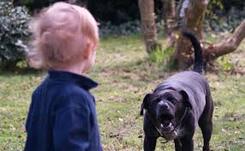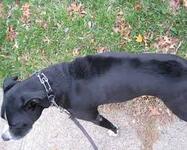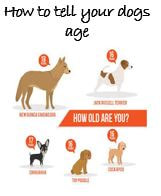|
If you are looking at getting a cross breed, and want a dog that will be very friendly towards people in general, do consider doing a MuttMix test before taking the dog home to ensure that there is not a cross with one of the breeds that can be otherwise towards people. Prevention is always better than cure. The test can be done in the comfort of your own home, and is very easy to achieve. Please do contact us if you have any questions at all. www.muttmix.co.za
|
Dog Bites to Unfamiliar People - why do these tend to occur?
by. Friends of The Dog
by. Friends of The Dog

In an article on the News24 website they say, “According to law firm DSC Attorneys, dog bites account for tens of millions of injuries annually, and SA has the highest incidence of dog attack deaths in the world, relative to population”. They go onto say, “that in SA dogs account for 76% to 94% of animal bite injuries”. Unfortunately, in all the research we came across worldwide, the majority of bites were to children and what is even sadder, is that the majority of these could have been prevented.
Unless it is true Idiopathic Aggression (where absolutely no reason is present), which is not common, dog bites always have a reason for occurring, even though' we may not have known or realized why - let's have a look at the various categories which will give you an idea as to why they occur:-
Categories of Aggression
Aggression is divided into various categories, and any of these, or a combination of same, could be responsible for the aggression, and in some cases, the reason for the aggression is not even known. The basic categories are below and give you an indication as to why the behaviour may be occurring, and in all cases of aggression a person that is not only qualified as a behaviourist, but experienced in dealing with aggression should be called in. Not only is this behaviour dangerous to people and other animals, but an owner could also be sued for the damage caused, and possibly euthanasia of the dog as deemed dangerous.
According to a study which appeared in www.researchgate.net, they said that “Dog bites are a major cause of preventable traumatic injury in the paediatric population. We aimed to determine the epidemiology of dog bite injuries in a group of South African children with a view to developing potential preventive strategies. A retrospective review was done of patients presenting with dog bite injuries to the trauma unit at the Red Cross War Memorial Children's Hospital in Cape Town over a 13.5-year period. We identified 1,871 children treated for 2,021 dog bite injuries during the study period. Dog bites accounted for 1.5% of all trauma unit presentations. Male children accounted for 68% of the patients. Children under 6 years of age were more likely to have sustained injuries to the head, face, or neck, while children older than 6 years more commonly received injuries to the perineum, buttocks, legs, or feet. Younger children were more likely to be attacked at home and older children outside the home. The most frequent injuries were superficial, and the majority of patients were treated with simple medication, dressing or suturing. There were no dog bite-related fatalities. The relationship between the geographical location of dog attacks on children and the age groups attacked suggests that strategies to prevent dog bites should target both parents supervising younger children at home, and older children who encounter dogs outside the home.
Unless it is true Idiopathic Aggression (where absolutely no reason is present), which is not common, dog bites always have a reason for occurring, even though' we may not have known or realized why - let's have a look at the various categories which will give you an idea as to why they occur:-
Categories of Aggression
Aggression is divided into various categories, and any of these, or a combination of same, could be responsible for the aggression, and in some cases, the reason for the aggression is not even known. The basic categories are below and give you an indication as to why the behaviour may be occurring, and in all cases of aggression a person that is not only qualified as a behaviourist, but experienced in dealing with aggression should be called in. Not only is this behaviour dangerous to people and other animals, but an owner could also be sued for the damage caused, and possibly euthanasia of the dog as deemed dangerous.
- Breed – All dogs can be aggressive, especially if not socialized properly when young (between 3 – 18 weeks, critical period of socialization) and correct training undertaken – plus there is always the factor of the irresponsible breeder who views breeding as a way to make a quick buck, not taking into account the genetic components. However, based on studies and research that was undertaken, the most common breeds with aggression towards strangers were the Dachshund, Chihuahua, Jack Russell Terrier, English Springer spaniel, Rottweiler, and Australian Cattle Dogs.
- Territorial or Protective Aggression. The majority of dogs bark to warn you when a stranger approaches, however, if the dog is not balanced and the owner has inadvertently or purposefully encouraged the dog to be aggressive – this can be a very dangerous situation, with dogs even attacking strangers.
Unfortunately, some people have resorted to having large or fighting breeds in their gardens to protect their homes, very often untrained, and this is when especially dangerous, especially if the gate opens and the dog gets out, or the dog is at the back and somebody walks in.
- Possessive Aggression – also known as Resource Guarding. This could be over food, a toy, a bed, other similar objects, and some dogs resource guard people as well.
- Maternal Aggression – even the most loveable of dogs can become aggressive when protecting its pups.
- Pain related – as dogs are so good at disguising pain as it would make them look weak in the eyes of other dogs if they showed pain, owners do not always realize the dog is in pain – subtle signs and behaviour may not be noticed. Another instance when this may occur is in the area where aversive training techniques are used, including physical punishment.
- Irritable Aggression – this could be due to having a very itchy skin condition, or even a side effect from some types of medication, or towards a child or person who is pulling the tail, hugging unexpectedly etc.
- Redirected Aggression – often called Frustration Aggression. This occurs very often at people’s gates. It could be exhibited to either another dog or somebody coming up to the gate to stop the dog running up and down, or even when a person tries to break up a dog fight.
- Social Conflict Related Aggression. This could happen in several ways. There may be an upset in the hierarchy within the dog’s own pack and the dog is vying for status. This happens more commonly when adolescence occurs, or when an older dog goes into its senior years or its health deteriorates. Also, bringing in a pup to an existing dog/s can upset the current hierarchy, especially if the owner treats the pup as the favourite.
Owners often inadvertently reinforce aggression by being tense when out for walks when they see another dog, by either picking up a small breed dog (the dog thinks something to be scared of), or even tightening their hold on the lead. Owners can also cause the situation to escalate with their own body language and even their tone of voice – this signals to the dog that the owner is nervous and defensive action needs to be taken, and the stress and arousal levels will increase. You often find that dogs that do exhibit leash reactivity, are fine with other dogs when they are off lead.
Another main cause of social aggression is that the pup was not socialized right from being with its littermates, and then taken to puppy school to learn how to interact with its own species. Pups learn very quickly from their mothers and other pups; what behaviours work and what don’t. Not everybody realizes that the first 18 weeks of a pups life are the most important – this is called The Window of Opportunity or Critical Socialization Period, and it is a fantastic and vital period where the pup can be successfully introduced to as many different dogs and people as possible – always in a positive manner however. After the 18-week period, it is much harder for a pup to accept new things, especially as a fear period happens around this time as well. It is always a good idea to continue training after puppy school, so that the pup gains as many social skills as possible. - Sexual Aggression – normally when there is a female in season around, especially if the male dog is intact.
- Predatory Aggression – although this is normally exhibited towards other animals, a dog with a very high prey drive may well give chase and bite a running child, or even mistake a baby in a carry cot as prey, if it is making squeaking noises and waving it’s arms and legs in the manner that wounded prey may do.
- Fear Aggression – a dog that exhibits fear aggression is an extremely dangerous dog – often they exhibit very few signs of imminent attack, and tend to dive in, bite and then run away. A dog that is cornered is also a dangerous dog – it simply has nowhere to go, so will often turn aggressive. Often because the dog is crouched down in the corner, and showing submissive behaviour, people do not realize that this could turn to aggression very quickly.
- Over the many years we have worked in the industry, we estimate that approximately 98% of aggression was originally fear based – the dog finds that a particular behaviour works at keeping the perceived threat at bay and will repeat the initial behaviour, and if that does not work, the dog has to escalate the behaviour to get the desired result of the perceived threat leaving.
Researchers have identified a new genomic region and anxiety-related candidate genes associated with fearfulness in dogs. Findings support their hypothesis that fearfulness and anxiety are hereditary traits in dogs, and there may be shared factors underlying anxiety in both humans and dogs. Even more reason to ensure that the breeder you choose is top notch. - Disease Related Aggression – Some diseases may result in aggressive behaviour, such as epilepsy when the dog has a fit, hormonal imbalances such as hypothyroidism, hyperkinesis, neoplasia, a variety of genetic and metabolic disorders, as well as an infection related disease such as rabies.
According to a study which appeared in www.researchgate.net, they said that “Dog bites are a major cause of preventable traumatic injury in the paediatric population. We aimed to determine the epidemiology of dog bite injuries in a group of South African children with a view to developing potential preventive strategies. A retrospective review was done of patients presenting with dog bite injuries to the trauma unit at the Red Cross War Memorial Children's Hospital in Cape Town over a 13.5-year period. We identified 1,871 children treated for 2,021 dog bite injuries during the study period. Dog bites accounted for 1.5% of all trauma unit presentations. Male children accounted for 68% of the patients. Children under 6 years of age were more likely to have sustained injuries to the head, face, or neck, while children older than 6 years more commonly received injuries to the perineum, buttocks, legs, or feet. Younger children were more likely to be attacked at home and older children outside the home. The most frequent injuries were superficial, and the majority of patients were treated with simple medication, dressing or suturing. There were no dog bite-related fatalities. The relationship between the geographical location of dog attacks on children and the age groups attacked suggests that strategies to prevent dog bites should target both parents supervising younger children at home, and older children who encounter dogs outside the home.

Some signs of possibly aggressive behaviour
As a dog’s body language can be very subtle, a lot of owners and people do not even realize that the dog’s arousal levels are increasing and could result in aggression. So often we hear ‘the dog just bite for no reason, or bit out of the blue’. Unfortunately, the early signs were not noticed and the dog removed from the situation, so the dog is put in a position of having to escalate its behaviour. Here are some of the early signs and more obvious signs of aggression as mentioned above.
What has to be borne in mind is that a dog’s body language is complex, and a behaviour made in a millisecond could be ignored, plus, dogs tend to engage in multiple signs.
We believe that all dog owner should make themselves knowledgeable about a dog’s basic body language especially their own dogs, as it would save a multitude of dog bites, plus parents should educate children at the same time as how to approach and interact with dogs.
occasion, the head is turned slightly away. Whale Eye is best described as a very wide and bulging eyes, normally showing more of the white of the eye than usual.
Best way to handle aggression in a dog
In closing, please take note that any type of aggression, either towards strangers, owner or other animals is unacceptable, and get help as soon as possible – being proud of your dog that tries to ‘take out’ strangers will only lead to the owner incurring heavy medical bills and being sued if the dog does bite, plus there is a good change the dog will be euthanized due to dangerous behaviour.
As a dog’s body language can be very subtle, a lot of owners and people do not even realize that the dog’s arousal levels are increasing and could result in aggression. So often we hear ‘the dog just bite for no reason, or bit out of the blue’. Unfortunately, the early signs were not noticed and the dog removed from the situation, so the dog is put in a position of having to escalate its behaviour. Here are some of the early signs and more obvious signs of aggression as mentioned above.
What has to be borne in mind is that a dog’s body language is complex, and a behaviour made in a millisecond could be ignored, plus, dogs tend to engage in multiple signs.
We believe that all dog owner should make themselves knowledgeable about a dog’s basic body language especially their own dogs, as it would save a multitude of dog bites, plus parents should educate children at the same time as how to approach and interact with dogs.
- The body itself – it often stiffens (or goes rigid), and the dog becomes very still. This is what we call the ‘Stillness’ and it is a dangerous situation. Just because the dog is not snarling, growling etc does not mean it will not attack. The body is often straining forward.
- The eyes – dogs have the most beautiful eyes, but if they look like they are staring at you and the eye even seems to become hard or intense potential problem. This is often accompanied by the ears going back, and the hairs around the muzzle stiffening.
occasion, the head is turned slightly away. Whale Eye is best described as a very wide and bulging eyes, normally showing more of the white of the eye than usual.
- Tail normally goes high and stiff and could be slowly wagging.
- The dog’s hackles are raised (pilo erection). This could be around the neck, down the back, or at the base of the tail. In some dogs all of the above could be exhibited.
- Lifted lip and showing teeth – muzzle is often in a snarling position.
- Growling
- Some dogs will give a guttural bark that sounds threatening.
- Lunging towards the threat – some dogs will be snarling or barking at the Lopes-me time – no contact is made as yet.
- Mouthing – the dog holds onto a body part, often the hand, to control the person but is not applying pressure at this stage.
- Muzzle Punch – the dog may punch the person with their nose.
- Quick nip with enough pressure that bruising may occur
- Bite that causes a puncture wound.
- Repeated bites in rapid succession
- Bite and shake.
Best way to handle aggression in a dog
- Prevention! Consider the breed and the chances of aggression and do your homework on the various breeds.
- Prevention! If you are getting a pup from a breeder, ensure that the breeder is KUSA registered which gives you a better chance of success. Read the articles on our Puppy Page as to what to look for in both a breeder and choosing a puppy.
- Ensure that a pup is taken to puppy school, is exposed to as many different dogs and people (always in a positive manner) and further, and ongoing socialization is undertaken.
- The second any aggression is seen, get help from a professional.
- Practice positive reinforcement methods of training – at all costs do not engage in any of the old-fashioned methods such as Alpha Rolling, Jabbing, Choke and Electronic Collars and similar. This is a sure way to destroy your bond with the dog and in many dogs these methods result in aggressive behaviour – not always towards the owner, but to somebody else, even a child, that the dog may see as weaker than the owner.
- Prevent resource guarding occurring – go to a good puppy school where education is given to prevent problem behavior. Also ensure that the pup is exposed in a positive manner to different people of all ages, colours and wearing different clothes including hats, helmets, big boots etc.
- Prevent any type of dominant behaviours using only positive reinforcement methods.
- Avoid the dog being exposed to other dogs that tend to exhibit aggressive type behaviours.
In closing, please take note that any type of aggression, either towards strangers, owner or other animals is unacceptable, and get help as soon as possible – being proud of your dog that tries to ‘take out’ strangers will only lead to the owner incurring heavy medical bills and being sued if the dog does bite, plus there is a good change the dog will be euthanized due to dangerous behaviour.





